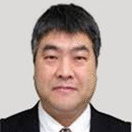RESEARCH ARTICLE
Research Productivity and Impact of Saudi Academic Ophthalmologists: Trends in H-index, Sex, Subspecialty, and Faculty Appointments
Ismail Abuallut1, *
Article Information
Identifiers and Pagination:
Year: 2023Volume: 17
E-location ID: e187436412301230
Publisher ID: e187436412301230
DOI: 10.2174/18743641-v17-e230124-2022-50
Article History:
Received Date: 5/9/2022Revision Received Date: 5/1/2023
Acceptance Date: 11/1/2023
Electronic publication date: 09/05/2023
Collection year: 2023

open-access license: This is an open access article distributed under the terms of the Creative Commons Attribution 4.0 International Public License (CC-BY 4.0), a copy of which is available at: https://creativecommons.org/licenses/by/4.0/legalcode. This license permits unrestricted use, distribution, and reproduction in any medium, provided the original author and source are credited.
Abstract
Objectives:
This study aimed to assess the scientific output of academic ophthalmologists in the Kingdom of Saudi Arabia in terms of the H-index, sex, subspecialty, and faculty appointments.
Methods:
This cross-sectional study used data extracted from publicly available sources. Saudi academic ophthalmologists and their academic rankings were identified from their respective university websites. The H-indices were collected from the Scopus, Web of Science, and Google Scholar databases. Descriptive, univariate, and multivariate analyses were performed to explore the association of the H-index with sex, academic ranking, and subspecialty.
Results:
A total of 93 Saudi academic ophthalmologists were included in the study. Men comprised 77% of the academic positions and tended to have higher academic positions than women. The mean H-indices for men and women were 5.04±5.21 and 4.19±4.31, respectively (p=0.54). The mean H-indices of lecturers, assistant professors, associate professors, and professors were 1±0.1, 3.06±3, 7.7±68, and 10±10.25, respectively. The H-index had a positive correlation with a faculty appointment with an unadjusted beta coefficient for professors of 8.264 (95% CI, 5.967 to 10.560) (p<0.001). Ocular pathology and glaucoma were the highest in research productivity, with mean H-indices of 11±9.8 and 7.8±7.5, respectively. Compared with the most common specialties of the cornea and anterior segment, the H-index had a significantly positive correlation with glaucoma and ocular pathology subspecialties at 3.442 and 8.500 unadjusted beta coefficients, respectively (p=0.015 and p=0.004, respectively). The top three subspecialties with female underrepresentation were general ophthalmology, surgical retina, and glaucoma.
Conclusion:
This study provides insights into the research productivity of Saudi academic ophthalmologists. A high academic ranking was associated with high research productivity, as measured by the H-index. Gender variation was noted in the academic and subspecialty representations.







